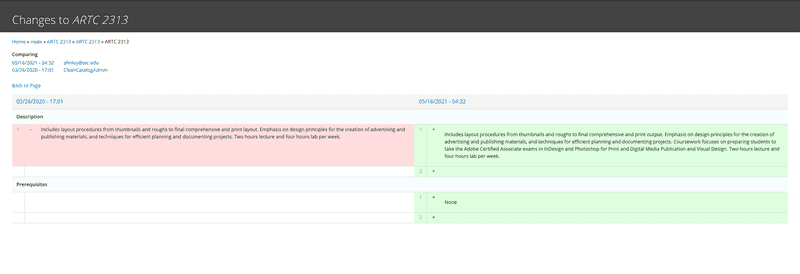4 Ways to Simplify Content Management
July 15, 2021
Catalog management can be a time-consuming task for your institution’s faculty, especially if you are using a clunky, outdated system. If you are still using a PDF catalog, then making any changes typically requires editing an InDesign file and exporting a new catalog version. This is a tedious process and often leads to multiple catalog versions circulating. On the other hand, using a digital catalog system that is not user-friendly can be challenging for staff members who aren’t tech-savvy. Here at Clean Catalog, we’ve built the backend of our software to be simple and intuitive to use. Check out these four features we’ve implemented to make content management a breeze for your staff.
User Workflows
All Clean Catalog software includes workflow capabilities that can be customized to fit your institution’s needs. Workflows ensure that content goes through the appropriate approval process prior to being published. For example, a professor may make updates to a course description, which is then submitted to the department’s dean for review, who pushes the changes to the registrar for final approval. Users will also receive email notifications when content is awaiting their approval and be able to monitor where content stands in the approval process. Workflows are fully customizable and there’s no limit to how many steps or users are involved in an approval process.
 Submitting content for review through user workflows.
Submitting content for review through user workflows.
Permission Settings
Setting permissions for individual users is another great way to ensure that your staff is only editing content belonging to their department. Permissions can be set for each individual user, which dictate what content they can edit and who the changes are submitted to for approval. Users can also be assigned to different roles, such as administrator, approver, or content editor, to specify their role in the approval process.
Templated Content
All content is created using templates, which ensure that content is both consistent and complete when published. Templates make content management simple for your staff since they are not creating new degrees or courses from scratch. The user interface for editing templates is also very similar to Microsoft Word, so there is a minimal learning curve in content management for Clean Catalog sites.
 Using a template to create a new course.
Using a template to create a new course.
Documenting Updates
When your staff makes updates to your digital content, all of their edits will be documented under the Revisions tab. This allows you to review all changes that have been made, who published the changes, and revert to previous versions. Having a backlog of all previous versions acts as a safety net so that important content can never be overwritten or fully deleted.
 Reviewing past revisions to a course description.
Reviewing past revisions to a course description.
Here at Clean Catalog, we have built our software with your faculty in mind. Content management shouldn’t be a complex, time-consuming task for your staff. The user-interface for your digital content should be intuitive enough for all faculty to feel comfortable using and allow for easy editing. If you would like to learn more or schedule a demo to see the backend of our Clean Catalog sites, don’t hesitate to reach out to us.

